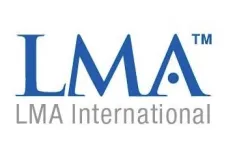Syringe testing to ISO 11040-4 Annex C2 Luer cone break resistance


Solution
- Software-controlled compression tester
- Special fixtures to locate and load a selection of syringe barrels
Benefits
- Flexible and efficient equipment to repeatedly test to the relevant standards
- Upgradable accessories to extend the test capabilities
Requirement
The ubiquitous medical syringe is an extremely important device, delivering (parenteral) injectable products to the patient by means of a cylinder and plunger mechanism. To ensure safe use of an injectable medication, prefilled syringes for single use were developed to avoid the need to transfer the product from its supplied container into a hypodermic re-fillable syringe—a time-consuming process with potential for contamination.
The medical devices and pharmaceuticals sector is highly regulated, driven by compliance and auditing processes and all syringes need to perform precisely to specification. The Luer lock/slip connector design is universally used for sealing in all manner of connectors in the industry.
Our customer required a test system to meet ISO11040-4 (Glass barrels for injectables and sterilised sub-assembled syringes ready for filling). Annex C covers Test methods for syringe barrels, and C2 Method 1 specifies Luer cone breakage resistance.
Solution
Mecmesin supplied a MultiTest universal tensile and compression testing machine with appropriate loadcell capacity, crosshead speed control and data sampling rate, as indicated by the test standard. The customer provided a selection of syringe specimens, and our Special Applications team manufactured the fixtures to perform the break test.
A notched compression probe—to apply force to the tapered section where the Luer connection occurs—ensures the bending load stresses at the correct point. Interchangeable components enabled the customer to test various syringe configurations and also run other tests referenced in the standard.
The software controlled the approach of the compression probe and captured the peak force as the barrel broke. An appropriate threshold value was used to immediately indicate a pass or fail result.
Test equipment
- MultiTest 2.5-i software-controlled compression tester
- Special fixtures to locate and load a selection of syringe barrels
- Additional auxiliary fixtures are available for other Annex procedures to this standard, all fitting the holder frame















![Biopsy gun spring strength [PDV10011]](/sites/default/files/styles/large/public/case-study/2024-04/biopsy-pen-fitment-to-trigger-fixture-omnitest.png.webp?itok=vvurETVf)
